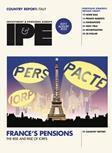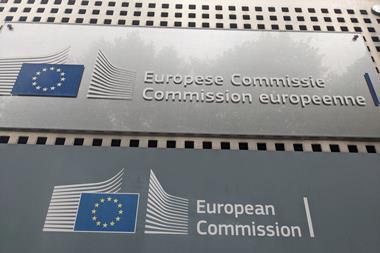Sweden’s AP7 has opened up about the way it deals with the lack of publicly-accessible climate information about companies in its task of assessing net-zero alignment, as a way of prompting more data disclosure and analysis in the future.
The SEK855bn (€79.5bn) national pension fund recently featured in two case studies published in the latest Paris-aligned Asset Owners progress report, one of which details the methodology used to monitor alignment of its portfolio on the path to net-zero greenhouse gas emissions.
AP7 bases its targets for alignment and for active ownership on its Investor Climate Action Plan (ICAP) portfolio, which comprises those companies in its overall portfolio which have the largest carbon footprints (scope 1 and 2).
Since the ICAP portfolio was identified, AP7 has now added further issuers to that priority list by taking into consideration scope 3 emissions and deforestation risk.
Though the ICAP portfolio only involves around a tenth of the firms AP7 invests in, these businesses do account for at least 70% of financed emissions for the entire fund, according to AP7, which provides the default option in Sweden’s first-pillar premium pension system.
Johan Florén, head of ESG and communications at the Stockholm-based pension fund, told IPE: “By focusing on the ICAP portfolio we have a list of issuers covering over 70% of financed emissions and fewer data gaps.
“We can focus our active ownership efforts on these companies, which, given their size and emissions profile, are highly relevant to decarbonise,” he said.
As the biggest players change and improve, Florén said, AP7 hopes there will be ripple-down effects at peer companies.
“Furthermore, as those companies decarbonise we would expect the number of issuers in our ICAP portfolio to increase – to meet 70% of financed emissions criteria,” he said.
AP7 is a universal owner with a large and global portfolio, he said, and faces significant gaps in the primary data points it uses for assessing an issuer’s net-zero alignment – such as targets, emissions and decarbonisation plans.
“We shared our approach to evaluating alignment in order to illustrate our situation and to exemplify a pragmatic solution based on publicly-available data, and also to highlight the need to extend the scope of credible publicly-available net-zero analysis,” said Florén.
“We expect the data gaps to close when the number of analysed companies increase, but at the moment there is a disconnect between the need to measure net-zero alignment and the data that is available,” he said.
The pension fund had to create a baseline assessment of portfolio alignment, to meet its net-zero commitment, he said, adding that it was important to base that on publicly-available data.
“As a universal owner we prioritise our efforts based on the potential for real-world emission reductions, and this approach reflects that prioritisation,” he said.
There are several reasons why it was key to found the evaluation on information everyone could access from investor-led initiatives, according to Florén.
“Firstly, the methodology and evaluation are publicly available, and that means the company can understand the grounds for the assessment and the steps the company should take to improve the result,” he said.
“Secondly, any future changes to the methodology – TPI or CA100+ benchmark – would be transparent and based on wide consultation, which makes it simpler for us to explain or justify any changes to methodology,” the ESG chief said.
Read the digital edition of IPE’s latest magazine





































No comments yet